


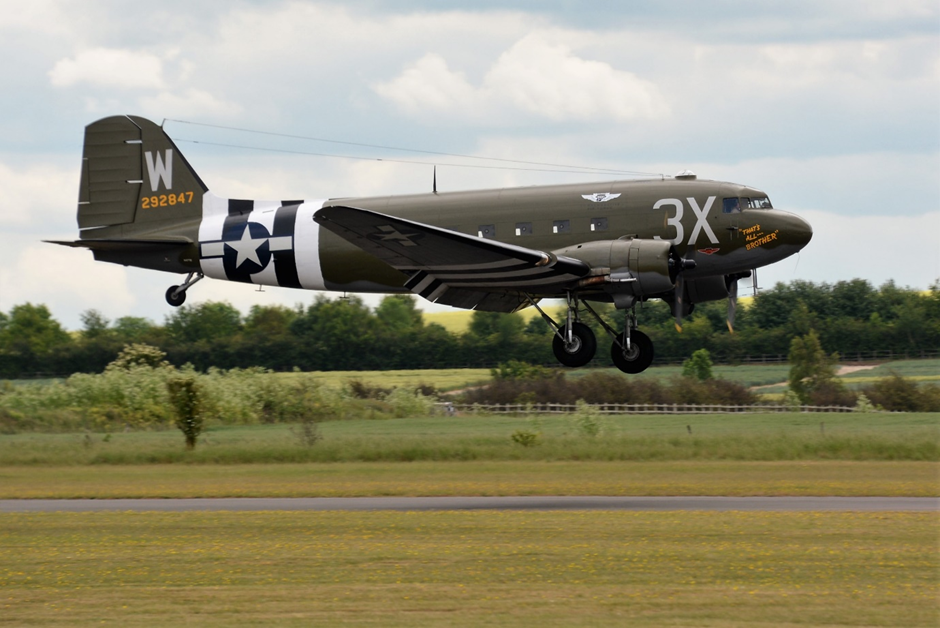
With this year’s Duxford Summer Air Show commemorating the 80th anniversary of D-Day and a return UK visit by a fleet of Dakotas from the USA based D-Day squadron, this June you can expect to see many aeroplanes painted in D-Day markings in the skies over the airfield. Given this sight you would be forgiven for thinking this Douglas built aircraft was designed from the outset as a military transport, you would however be wrong. Long before the olive drab airlifters arrived the Douglas company had offered the design to the civil airline industry as an all new metal built airliner. With US airlines operating a mixed fleet of mainly wooden built airliners they were looking for something more robust and with a longer life. In February 1933 Boeing first flew its new all metal Model 247. Designed to carry 14 passengers the new aircraft was tested by pilots from Boeing’s affiliate airline Boeing Air Transport (Later to become United Airlines) who decided the design was too large and they wanted it reduced to a ten- seater. This Boeing agreed to and an order from the airline was lodged for 60 examples.
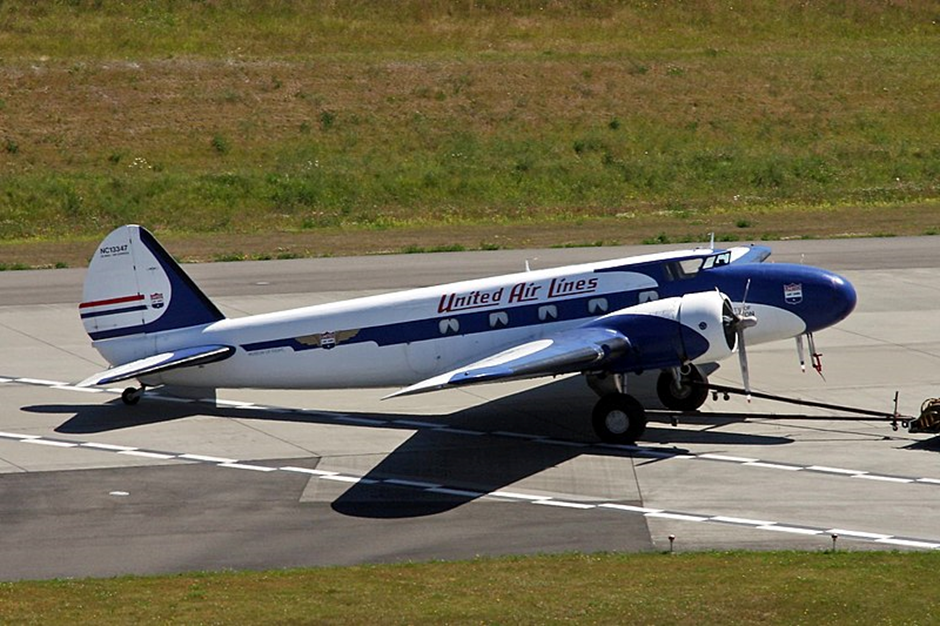
Transcontinental & Western Air (TWA-later Trans World Airlines) also tried to buy the new airliner but with the United order for 60 aircraft to fill first they knew it would be a long wait before Boeing would build theirs, by which time United would have the advantage over them. Boeing also made it clear they would accept no new orders until the original 60 had been built. TWA therefore approached Douglas to see what they could offer. First flying in 1933 the DC-1 was the first model in the long running DC (for Douglas Commercial) series which ended with the DC-10. The new all metal DC-1 could carry 12 passengers with a flight crew of two plus a flight attendant. One big advantage over the Boeing was the cabin floor did not have the spar running through it and thus causing a big step in the middle of the cabin. In testing, the new aeroplane exceeded all of TWA’s performance specifications.
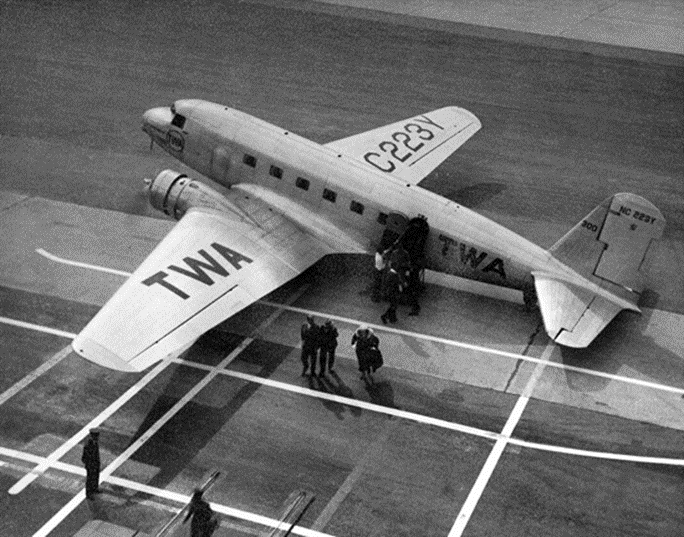
TWA liked what they saw and accepted the DC-1 in September 1933 with some modifications such as an increase in capacity to 14 passengers and more powerful engines. On the strength of this they placed an order for 20 of the modified design. Only one DC-1 would be built and the modified 14 seat version would now be known as the DC-2. The sole DC-1 would be sold by TWA to Lord Forbes of the UK in 1938. After a short time with him it was sold in France eventually arriving at its last operator Iberia Airlines who flew her until she was damaged beyond repair in 1940.
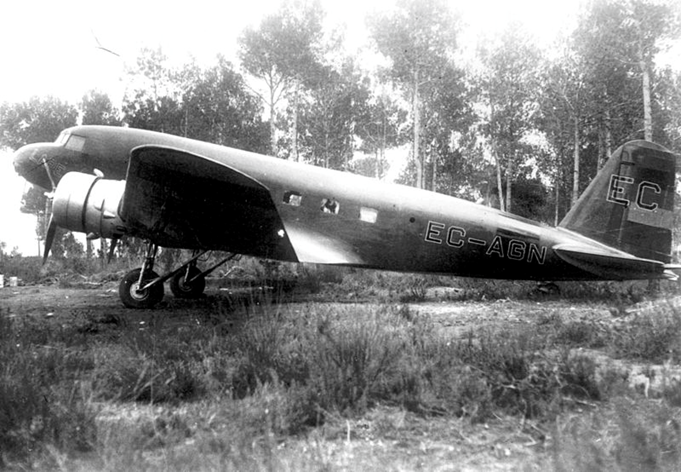
Although TWA was the launch customer for the DC-2 other US and European airlines also ordered the type and in 1934 KLM entered a DC-2 into the MacRobertson air race from London to Melbourne. The race was won by the de Havilland DH-88 Comet racer ‘Grosvenor House’ but the DC-2 followed it into second place with a Boeing 247 in third. TWA would eventually have a fleet of 30 DC-2s, many other airlines from around the world placed orders for this new airliner which was a marked improvement on those it replaced.
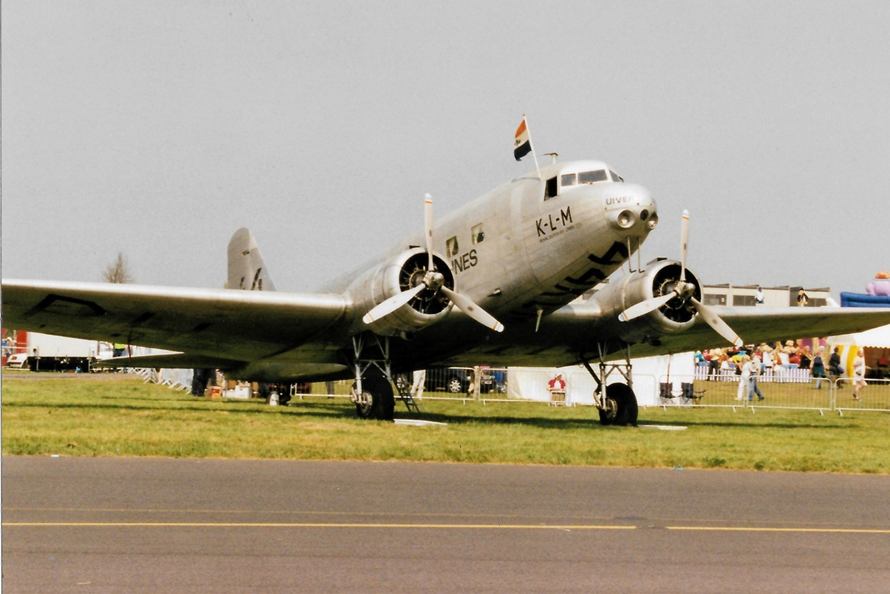
American Airlines wanted to offer overnight flights and add sleeper berths to the planes, but the DC-2 fuselage was too narrow, so they approached Douglas for a larger version. Douglas agreed after American had promised to order 20 examples. A new DC-2 version with a larger wider fuselage was introduced, the new aeroplane would be known as the Douglas DST or Douglas Sleeper Transport first flying in December 1935.
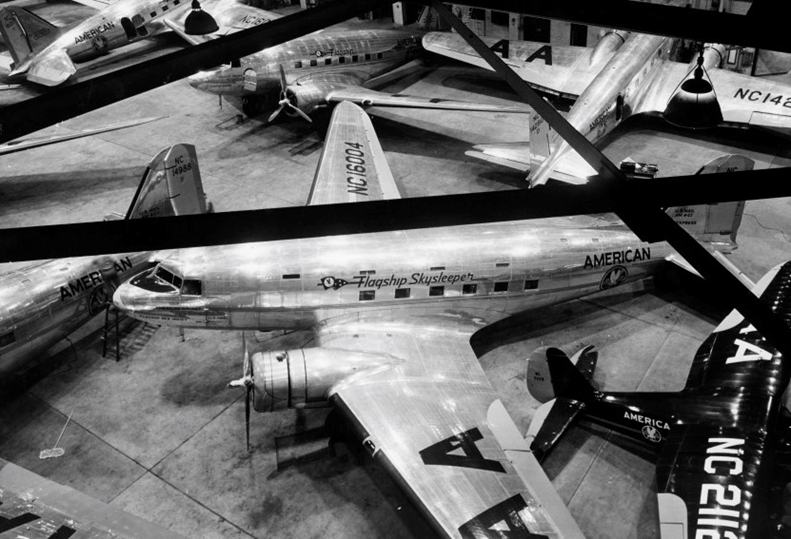
It quickly became evident that without the 14-16 sleeper berths the new version could carry a passenger load of 21, this version would be known as the DC-3 and the icon was born. The DST and the DC-3 changed the face of air travel in the USA, the new aeroplanes could cross the country from West to East in a time of 15hrs with just three refuelling stops, previous aircraft could only make short hops during the day with onward travel overnight being by train. American Airlines was the first to start operations with the DST/DC-3 on 26 June 1936 with flights from Newark and Chicago. The USAAF had already shown interest in the earlier DC-2 and out of 198 built when production ended in 1941, 62 had gone to the military but it would be the later DC-3 that really met their needs. DC-3 civil airliners continued to be made until 1942 when 607 examples had been built.

It was back in 1937 that the 24th production DC-3 destined for American Airlines rolled out of the factory. This aircraft remained with American throughout the war and was not impressed into the military, remaining a civil airliner all its life. It is hard to believe that 87 years on this aeroplane is still flying, the oldest DC-3 to do so. Owned by the Flagship Detroit Foundation she tours the US in her American Airlines colours offering rides so the public can experience what flying was like back in the old days.
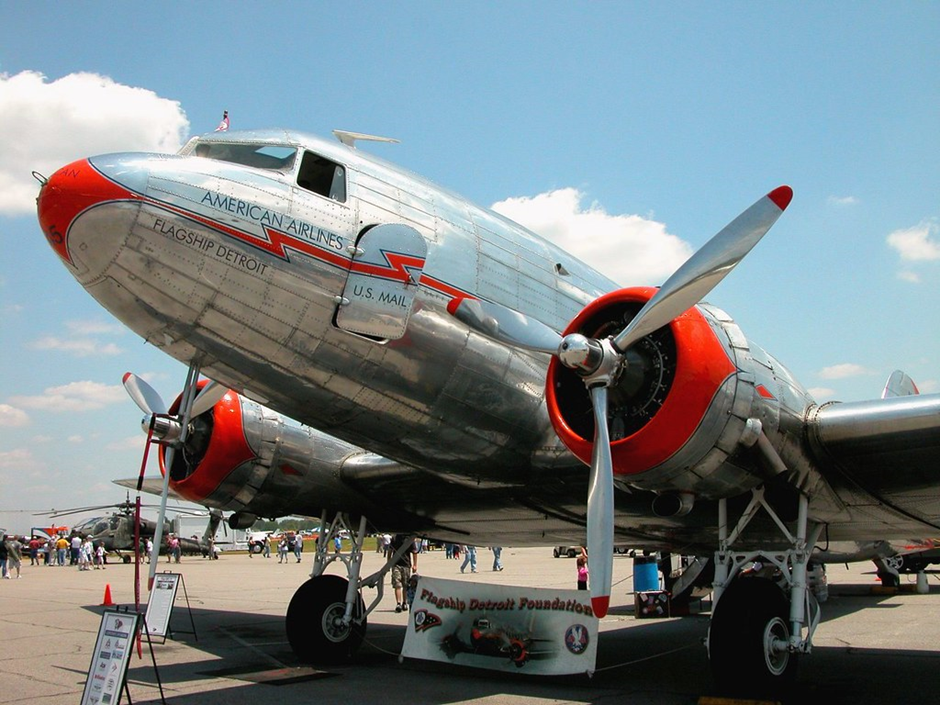
With America entering the war, all DC-3 production from there on went to the military and it is estimated a total of over 16,000, including those built under licence in the USSR and Japan, were made when production ended in 1950. The military DC-3 versions had designations such as C-41, C-47, C-51, R4D, Dakota and others. It was these aircraft plus the civilian DC-3s that had been impressed into the military that took part in the D-Day landings that we are celebrating here at Duxford this June. D-Day could be seen as the Dakota’s finest hour but the aeroplane was in service with the allies all over the world in every theatre of the war and according to General Eisenhower was one of four tools that helped win the war.
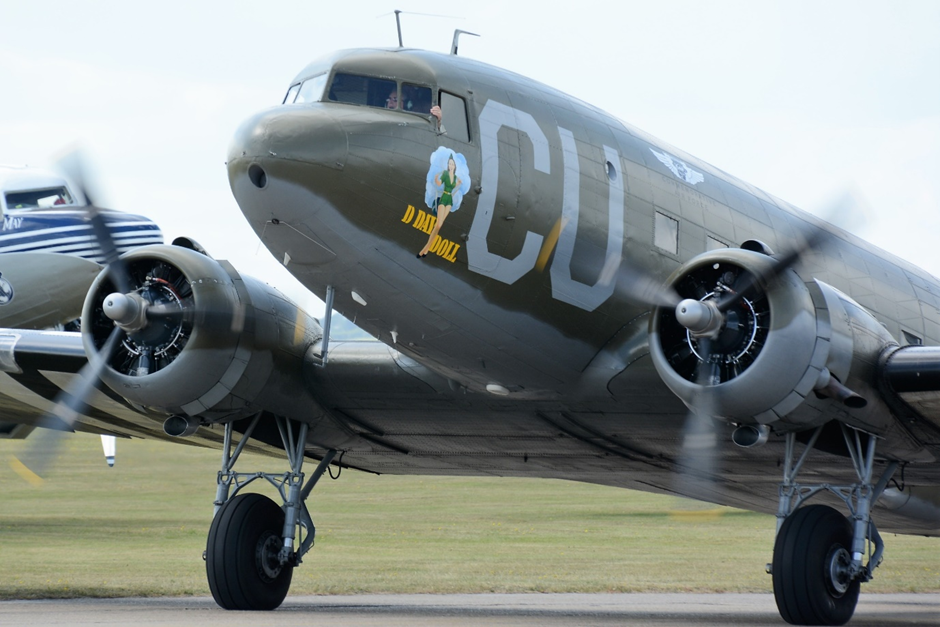
Following the end of the war many war-surplus military DC-3 variants entered the civilian market for both passenger and freight operations, with most of today’s older airlines at one time or another having a DC-3 on their books. Indeed, BEA operated 67 at one time or another with their last Dakota flight from Heathrow in 1960 and it was two years later that the type finally bowed out of BEA service when the DC-3s were withdrawn from their Scottish services. Despite many surplus Dakotas being sold off, the military still had large numbers in their inventories, which was just as well as come 1948 the Russians blockaded Berlin and the Berlin airlift started. The first aircraft carrying supplies into Berlin were USAF and RAF Dakotas. Dakotas would also see service in Korea and Vietnam.

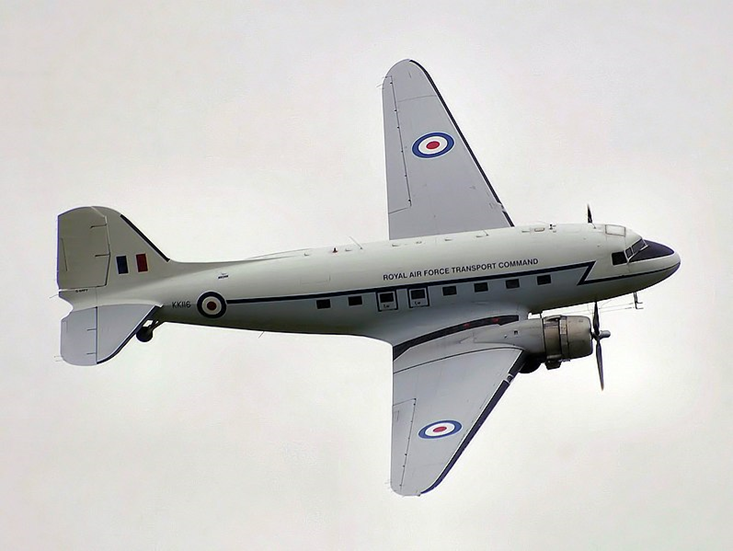
In 1949 Douglas introduced the Super DC-3 which featured a new fin, re designed wings and undercarriage it was also fitted with more powerful engines enabling a larger payload. However, as we have already seen the post war market was flooded with surplus DC-3s and only five of the Super version would be built. The US Navy and Marines however had 100 of their basic aircraft modified to Super DC-3 spec to be known as the C-117, the last of which, a Marines version, was retired in 1982. A small number of these C-117 aircraft were taken on by civilian operators.
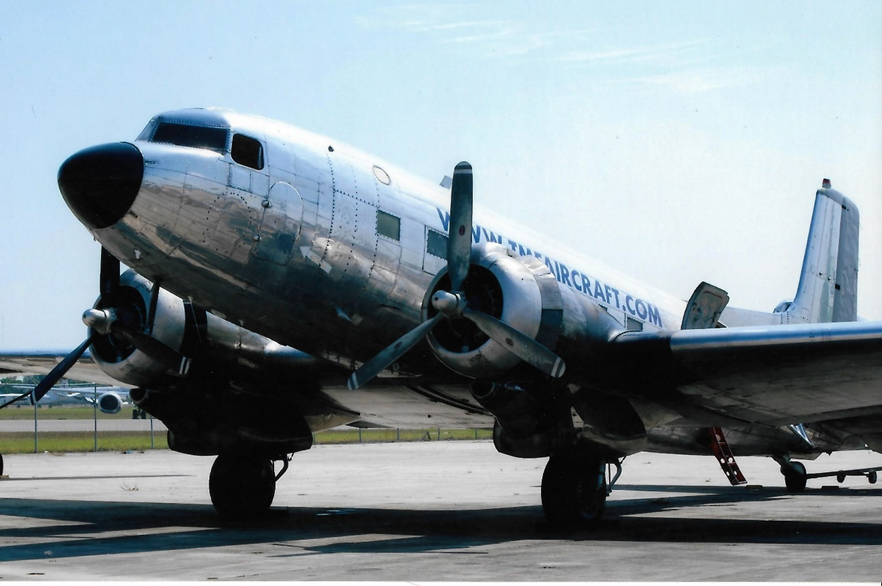
The Dakota gradually faded from military service as faster bigger aircraft replaced it but this took some time, the USAF didn’t retire its last example, a Basler Turboprop conversion operated by a Special Ops Squadron, until 2008. The RAF still has one on strength flying with the Battle of Britain memorial Flight. With the airlines the Dakota continued to give great service albeit with a smaller and smaller number of operators, it was possible until just a few years ago to still take a scheduled airline passenger flight on a Dakota when Canadian airline Buffalo Airways operated a Yellowknife to Hay River service.
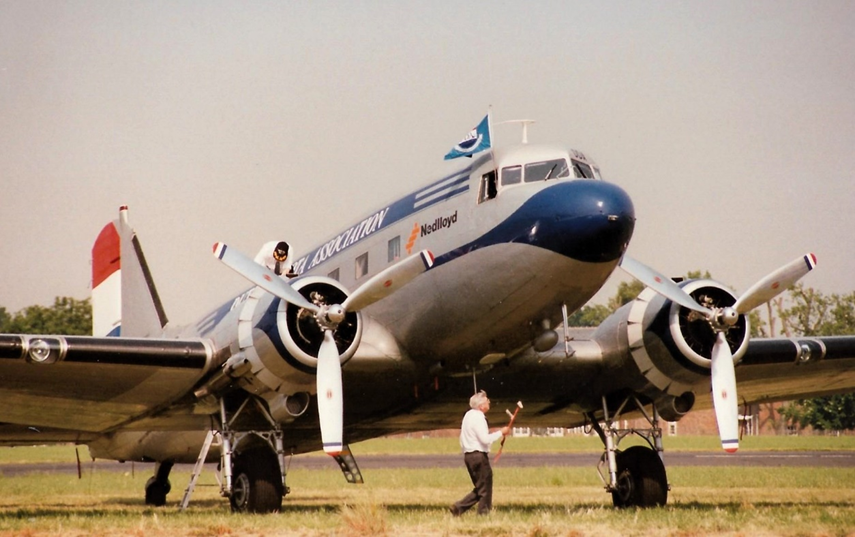
There are still to this day many airlines worldwide using Dakotas on cargo and charter flights with just a few still flying passenger scenic flights, but sadly the days when nearly every airport or large airfield in the world seemed to have a Dakota either sitting on the ramp or slowly decaying in a quiet corner have long gone. Indeed, the main European stalwart of passenger flying, The Dutch Dakota Association, has announced that due to ever increasing costs and shortage of Avgas they will cease operations at the end of the 2024 season.
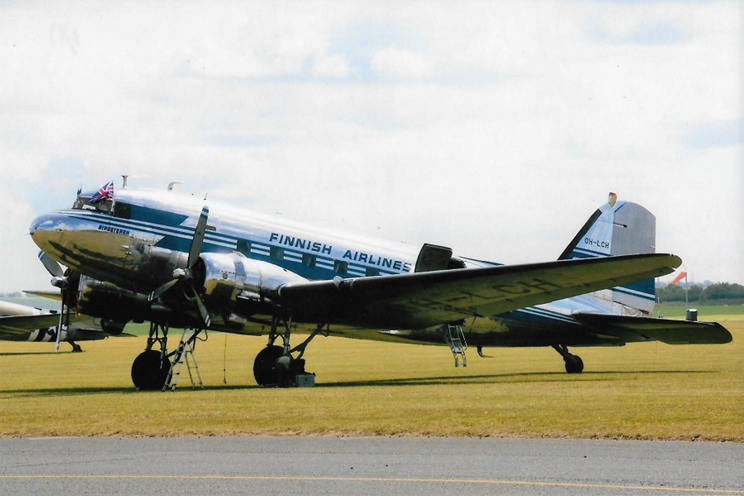
It is still possible to purchase a ‘new’ DC-3 with several companies offering zero timed turboprop conversions of old aircraft which see steady sales in the military and government agency fields. These ‘new’ aircraft have a longer fuselage, modern turboprop engines, avionics and other improvements. Which goes to prove the old adage ‘The only replacement for a DC-3 is another DC-3’. These modern- day conversions aren’t the first time however that a Dakota has been powered by turboprops. BEA operated a number of Dakota freighters and in 1951 pending the delivery of their new Dart powered Viscounts the company had two of these freighters converted to Dart turboprops, this was to give the company some operational experience of the new engine prior to the Viscounts arriving. In early 1953 they were both converted back to piston engines.
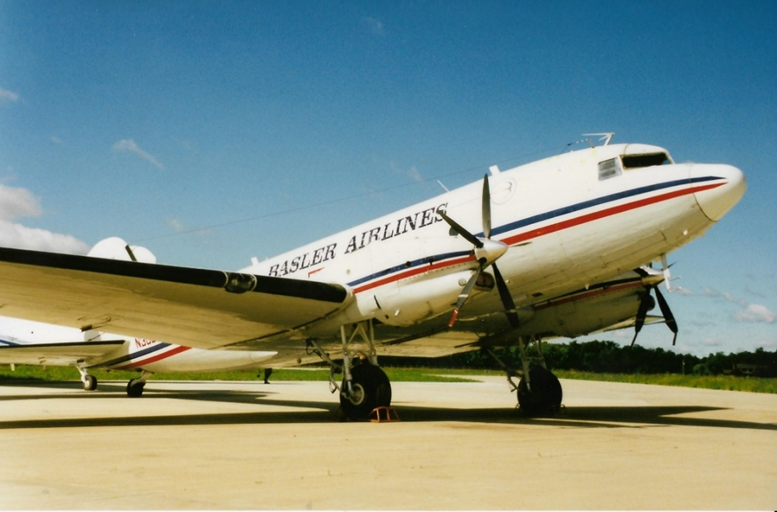
Finally, if you are in the market for a DC-3 and would like something a little different how about a floatplane version?
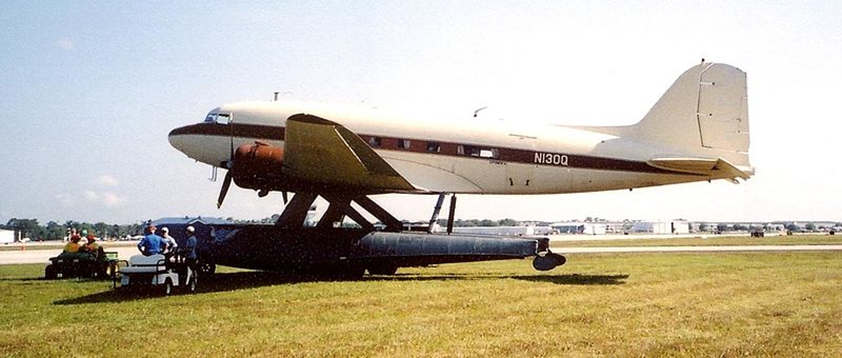
Keith Bradshaw
Registered Charity No. 285809